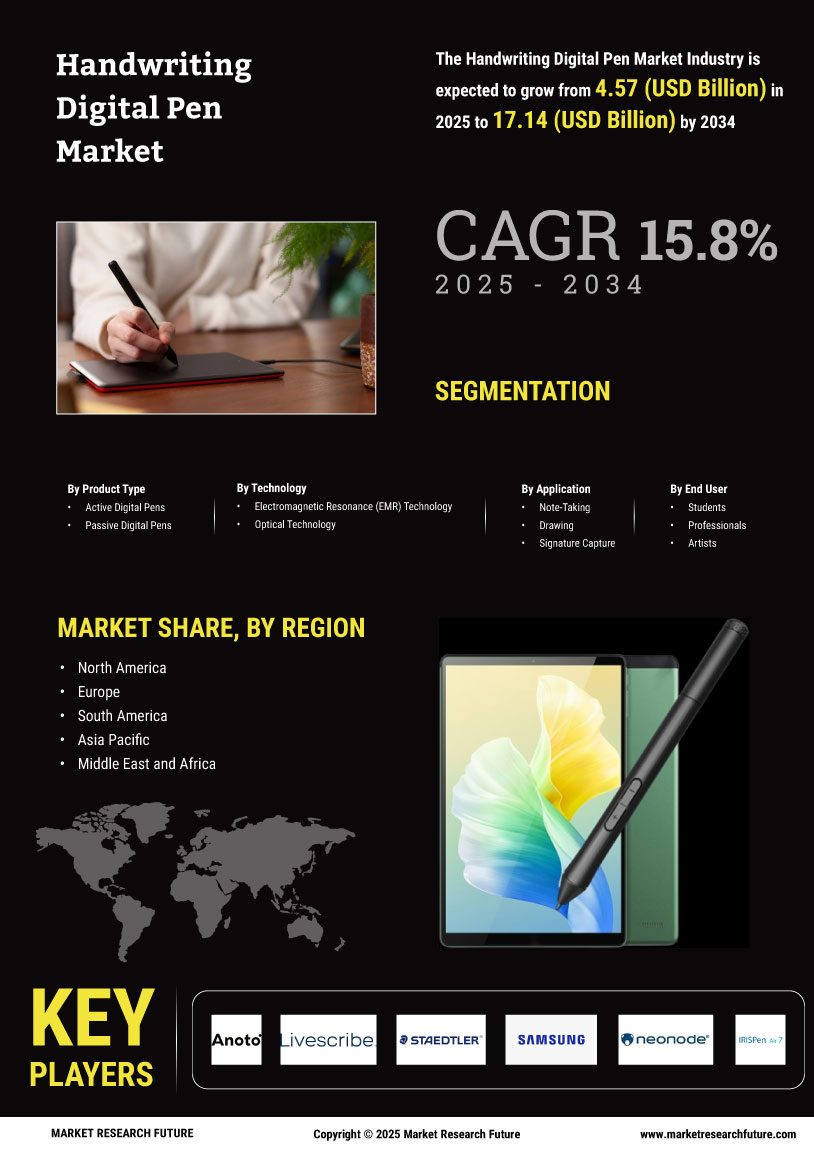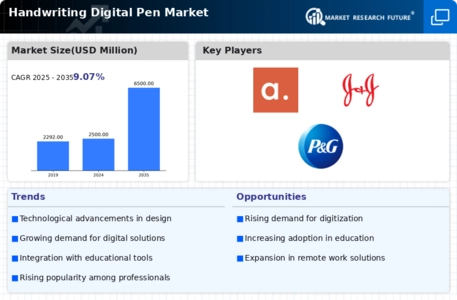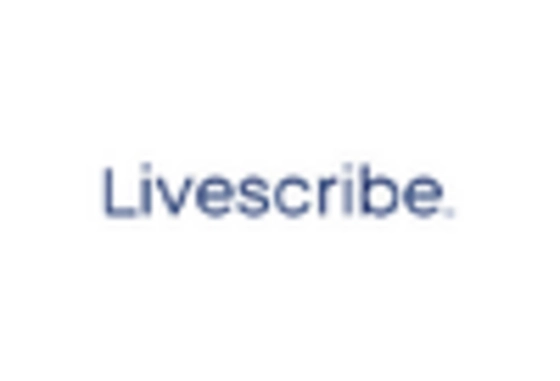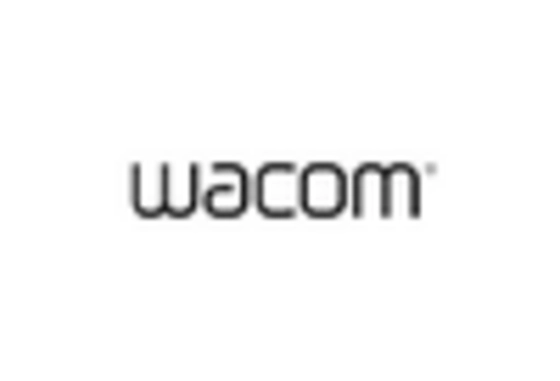The Handwriting Digital Pen Market is currently characterized by a dynamic competitive landscape, driven by technological advancements and increasing consumer demand for digital solutions that enhance productivity and creativity. Major players such as Wacom (Japan), Apple (US), and Microsoft (US) are at the forefront, each adopting distinct strategies to solidify their market positions. Wacom (Japan) focuses on innovation in stylus technology, emphasizing precision and user experience, while Apple (US) leverages its ecosystem to integrate digital pen capabilities seamlessly into its devices, enhancing user engagement. Microsoft (US) is strategically expanding its offerings through partnerships and software integration, particularly with its Surface line, which aims to provide a comprehensive digital writing experience. Collectively, these strategies contribute to a competitive environment that is increasingly centered around technological innovation and user-centric design.
In terms of business tactics, companies are localizing manufacturing and optimizing supply chains to enhance efficiency and reduce costs. The market structure appears moderately fragmented, with several key players exerting influence while also allowing room for smaller, niche companies to thrive. This fragmentation fosters a competitive atmosphere where innovation and differentiation are paramount, as companies strive to capture market share in a landscape that is continuously evolving.
In August 2025, Wacom (Japan) announced the launch of its latest digital pen, which features advanced pressure sensitivity and tilt recognition, aimed at professional artists and designers. This strategic move underscores Wacom's commitment to maintaining its leadership in the creative sector, as it seeks to cater to the growing demand for high-quality digital drawing tools. The introduction of this product not only enhances Wacom's portfolio but also reinforces its reputation as a pioneer in digital pen technology.
In September 2025, Apple (US) unveiled a new version of its Apple Pencil, which includes enhanced connectivity features and improved battery life. This development is significant as it aligns with Apple's broader strategy to integrate its hardware and software ecosystems, thereby providing users with a more cohesive experience. By continuously refining its digital pen offerings, Apple aims to strengthen its competitive edge in the tablet and smartphone markets, appealing to both casual users and professionals alike.
In July 2025, Microsoft (US) expanded its Surface Pen capabilities through a partnership with a leading software developer, enabling advanced handwriting recognition and note-taking functionalities. This collaboration is indicative of Microsoft's strategy to enhance the user experience across its Surface devices, positioning itself as a leader in the digital pen market. By integrating cutting-edge software solutions, Microsoft not only improves its product offerings but also reinforces its commitment to innovation and user satisfaction.
As of October 2025, current competitive trends in the Handwriting Digital Pen Market are heavily influenced by digitalization, sustainability, and the integration of artificial intelligence. Companies are increasingly forming strategic alliances to enhance their technological capabilities and market reach. The shift from price-based competition to a focus on innovation, technology, and supply chain reliability is evident, suggesting that future differentiation will hinge on the ability to deliver unique, high-quality products that meet evolving consumer needs.
















Leave a Comment